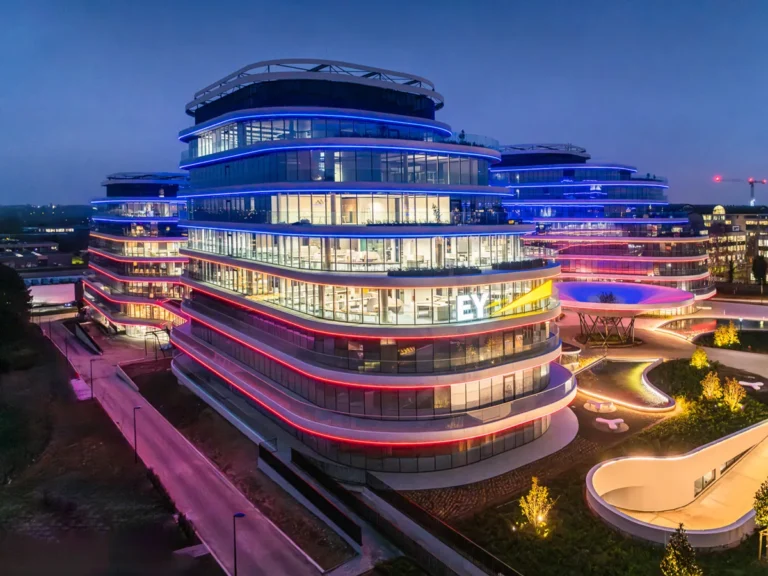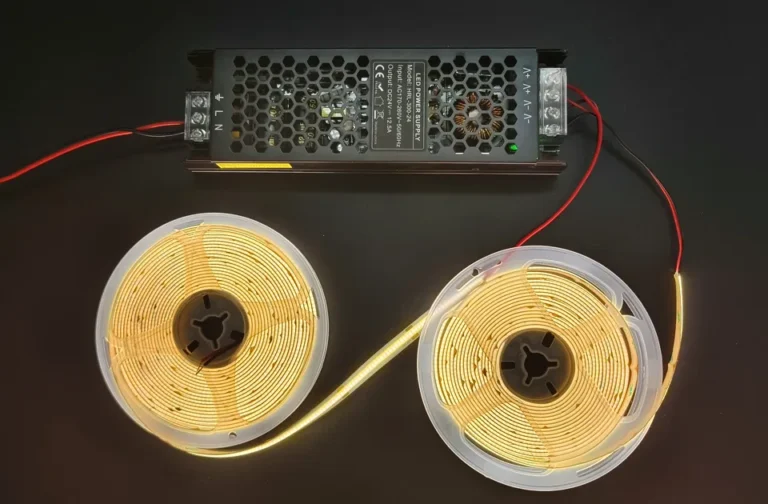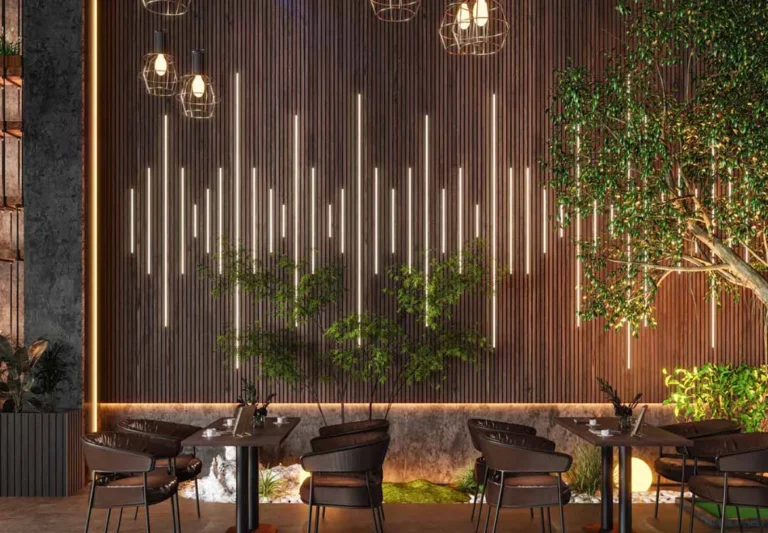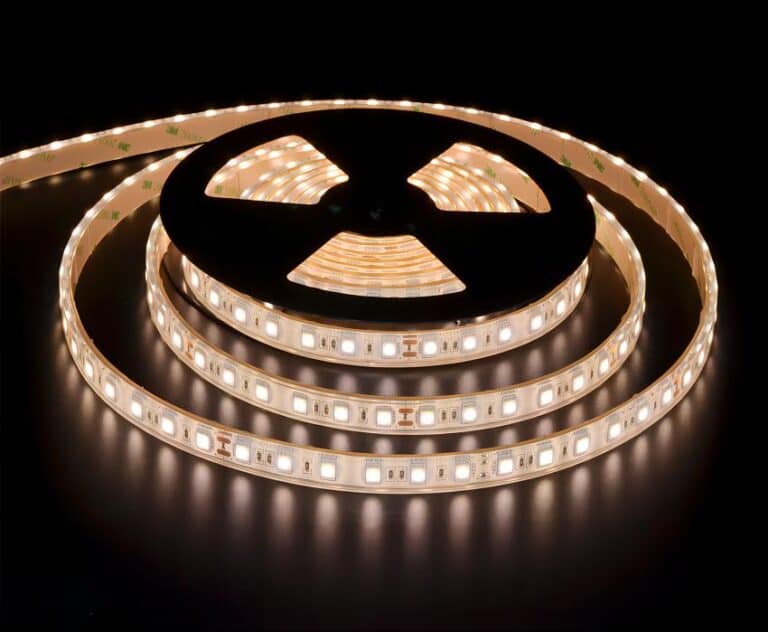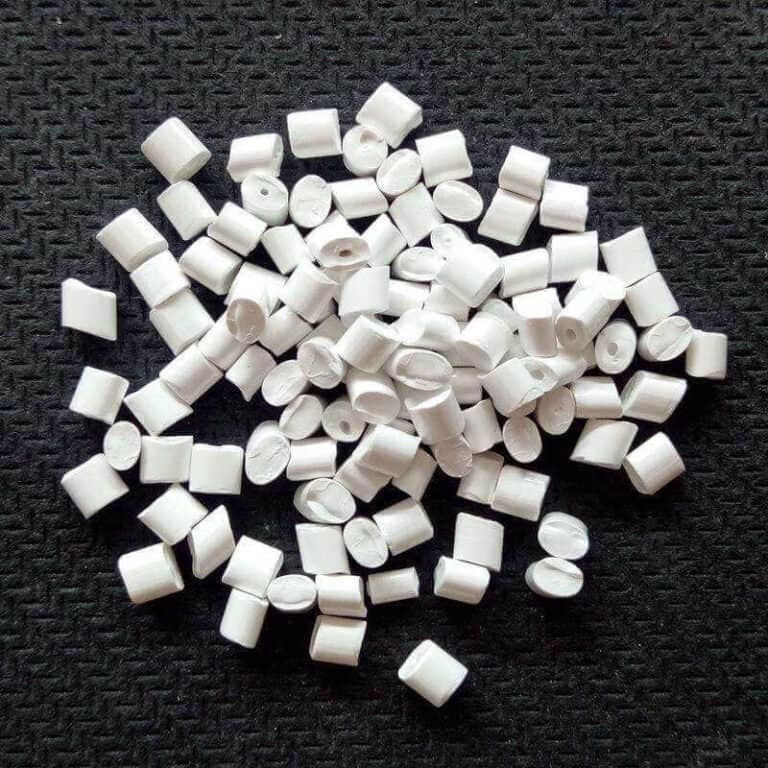Neon signs have become very popular in the last few years and are found in every corner of business. Shopping malls, hotels, and bars—all kinds of storefronts can be found everywhere. Neon signs are often used to create various shapes and words, and when they are used for neon lettering, they come alive with vibrant colors and come in a variety of styles. Neon signs enhance the ambience of a space and brand image, greatly attracting attention and leaving a lasting impression.
What is a neon sign?
Neon sign refers to the bold, glowing effect that mimics traditional neon signs, making letters or patterns appear as if they are illuminated by vibrant lamps. Perfect for everything from logo designs to social media posts, this effect gives your sign a glowing and electrifying feel. Designers often create neon lettering to capture the vintage vibe of neon signs or to give their projects a cool, futuristic aesthetic.
A typical LED neon sign consists primarily of an acrylic backing, LED neon strips, and a power supply.
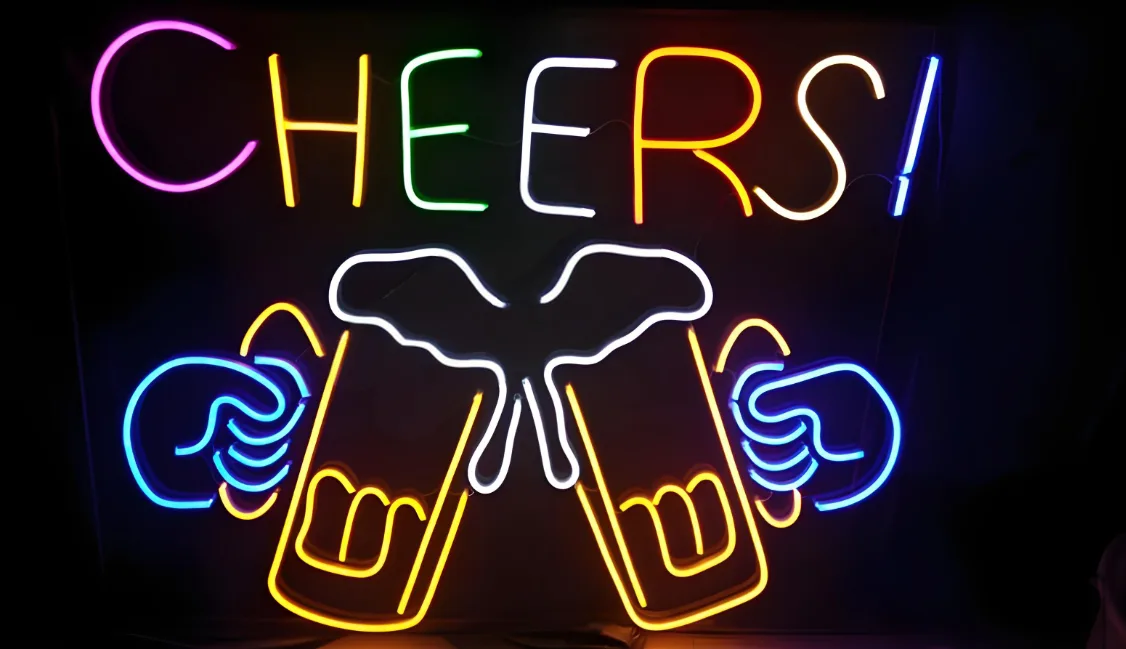
Why use LED neon strips for neon signs?
Neon signs made with LED neon strips have the following features:
1. Eye-catching: Be the first to be noticed—customized neon signs effectively communicate your brand’s story and stand out from the crowd. With vibrant colors and captivating designs, neon signs create a memorable impression and reinforce a product’s brand identity.
2. Make your brand more memorable: You can design it to incorporate flashing, flowing light effects, or gradient effects for a visual impact that will make your brand shine across all marketing channels. Alternatively, you can use neon lights to outline more curved chakras or create shareable moments to increase engagement.
3. The perfect sense of ambiance: Neon signs can easily enhance any atmosphere or setting. Whether you’re creating a cozy atmosphere for your business, adding a bit of personality to your home, or designing an immersive experience for an event, LED neon and its lights can create the perfect ambiance.
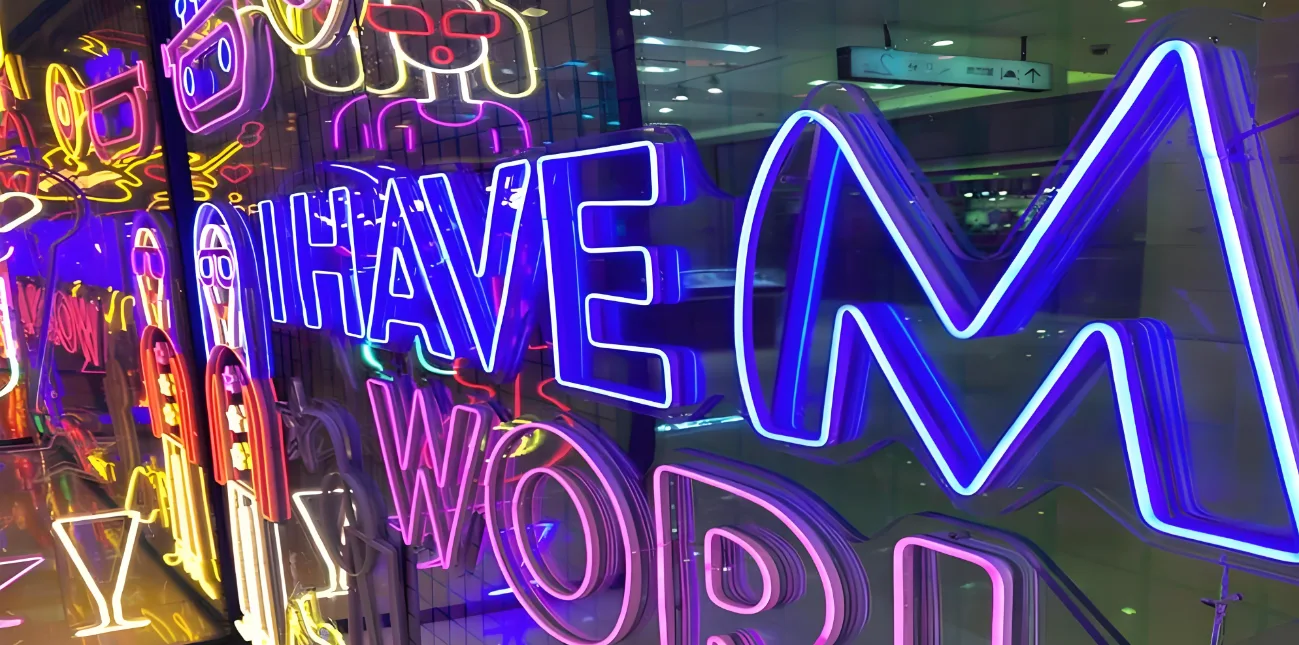
How to buy customized neon signs?
SignliteLED, as a custom neon sign supplier and manufacturer in China, we offer one-stop manufacturing of custom neon signs. From order confirmation and design to the final customized neon sign being completed and exported to customers, all steps are done in the SignliteLED factory. Therefore, we can strictly monitor the production process and control the quality of our products.
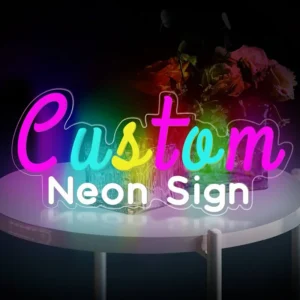
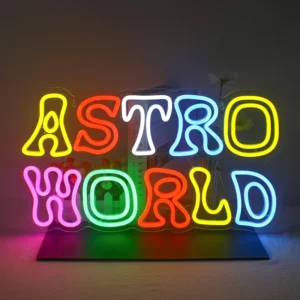
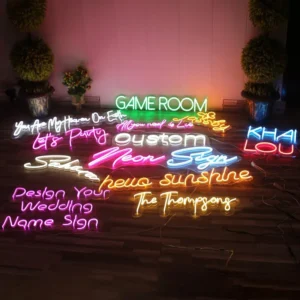
Size: Small/Medium/Large/Custom
Backboard: Cut to shape
Backboard Colour: Clear/White/Black
Application: Indoor/Outdoor
Electrical Plug: US/CA/EU/UK/AU/JP
Color: Red/Green/Blue/Orange/Purple/Pink/Warm White/Cool White/Golden Yellow/Lemon Yellow/lce Blue/Light Pink
30% Off Sales Price $216.15
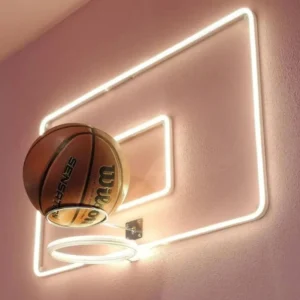

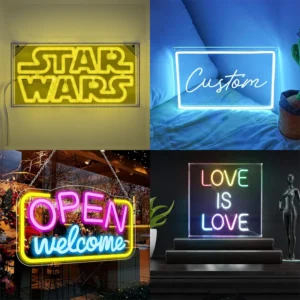
Size: Small/Medium/Large/Custom
Backboard: Cut to square
Backboard Colour: Clear/White/Black
Application: Indoor/Outdoor
Electrical Plug: US/CA/EU/UK/AU/JP
Color: Red/Green/Blue/Orange/Purple/Pink/Warm White/Cool White/Golden Yellow/Lemon Yellow/lce Blue/Light Pink
30% Off Sales Price $216.15
If you need to purchase a customized neon sign, please check out our step-by-step guide to customization. Below is a detailed guide:
1. Determine Your Design and Specifications
Before requesting a quote, you need to determine the following:
- Text and Fonts: What text or sign do you want? Choose the font style (handwriting, bold, block letters, etc.).
- Color: Neon is available in a variety of colors (white, pink, blue, warm yellow, etc.).
- Size: Measure the mounting space to make sure it’s the right size.
- Backplate Shape and Color: Do you need a clear acrylic backplate, cut to a specific shape, or suspended?
- Indoor or Outdoor: Outdoor neon needs waterproof and weatherproof material.
2. Design and Confirmation
Before we start to make the LED neon sign, our designers will make a free rendering and confirm the font, size, color, backplate, etc., with you.
3. Production, Aging, and Packaging
After confirming the design with you, our well-trained workers use the engraving machine to cut slots on the acrylic backsheet according to the design style, measure the length of the backsheet, and cut the neon strips to the right length and assemble them. After the assembly is completed, we need to carry out a lighting test and an aging test. We will carry out 12 hours of continuous lighting to make sure the LED neon lights work stably.
After aging, we will package your customized neon light for shipment. LED neon lights are fragile products; packaging is especially important. We use thick cardboard boxes for small neon lights and wooden boxes for large neon lights.
Can you make your own neon signs?
Yes, you can make your own neon signs with no special skills required as long as you use flexible LED neon tape. LED neon signs are a great alternative to real neon signs. It consists of simple or addressed LED strips encapsulated in silicone or epoxy resin. This type of neon light is relatively inexpensive compared to traditional neon light and does not require special job skills.

What are the advantages of LED neon lights compared with traditional neon lights?

1. Energy Efficiency and Life Span: The luminous efficiency of LED is 2-3 times that of traditional neon, and the power consumption is only 30%-50% of traditional neon. Longer life: LED life expectancy of up to 50,000-100,000 hours, far more than the traditional neon light’s 10,000-20,000 hours.
2. Safety and Environmental Protection: LEDs use 12V/24V low-voltage DC power; there is no high-voltage leakage risk; traditional neon lamps need thousands of volts of high voltage; there are safety hazards. LED does not contain mercury, neon, and other chemical gases; the waste is easy to recycle; traditional neon lamps contain mercury vapors; improper handling will pollute the environment.
3. Design and Installation: LED strip lights can be bent and cut to adapt to complex shapes; traditional glass tubes need to be customized, are fragile, and have limited installation; LED material (silicone or PVC) is lighter and can be directly pasted or hung; traditional glass tubes are bulky and need to be replaced as a whole when broken.
4. Visual Effect and Function: LED supports RGB full-color changes, and dynamic effects (gradient, flashing) can be controlled by programming; traditional neon needs to be filled with different gases or phosphors, and the color is fixed; LED strip has no light spot faults, and the light is soft; traditional neon may appear unevenly light and dark.
5. Economy: Traditional neon lights are expensive, complicated, and inconvenient when using glass tubes, high voltage electricity, and inert gases. LED neon lights use LED technology and a new structure, wrapped in a PVC, silicone, or PU shell around the LED light source, using unique optical design technology and special shell design to increase the light intensity and uniformity. LED neon lights are flexible and easy to manufacture. The efficiency is very high.
LED neon lights in energy saving and environmental protection, safety and flexibility, and dynamic effects and scene adaptability comprehensively beyond the traditional neon lights are especially suitable for the pursuit of creativity, sustainability, and low-maintenance needs of modern business and the art field.
What are the types of LED neon strip materials on the market?
Usually LED neon strips consist of LED strips and wrapping materials. The wrapping material is the main distinguishing point, and the common classifications are:
1. PVC Material: Soft and easy to bend, low cost, rich colors, but poor heat resistance (usually -20°C~60°C) and easy to age for long-term outdoor use. It is suitable for indoor decoration (e.g., home ambient lighting, advertising signboards) and short-term activity decoration.
2. Silicone Material: High temperature resistance (-50°C~200°C), waterproof and anti-ultraviolet rays, strong flexibility, long life, but the cost is higher. Suitable for outdoor use. Outdoor advertising, architectural contour lighting, water feature decoration, and other high-demand scenes.
3. PU (thermoplastic polyurethane): environmentally friendly, non-toxic, low temperature resistance (-40°C~80°C), good tear resistance, flexibility between PVC and silicone. Decoration for low-temperature environments, such as car lighting and winter outdoor lighting.
4. Acrylic Material: Uniform light transmission, suitable for the production of modeling lamps and lanterns. In line with environmental requirements, acrylic material has good weather resistance, can adapt to a variety of climatic conditions, and has a long service life. Acrylic has a high transmittance to ensure the uniform spread of light and softness. Acrylic neon light is relatively hard, and the price is higher.
Indoor Decoration: Priority to choose PVC or PU, cost-effective. Outdoor/Harsh Environment: Choose silicone for better durability. Acrylic is suitable for high-end, customized design.
PVC vs. PU vs. Silicone LED Neon Flex: Which Is Better?
1. PVC LED Neon Flex is a kind of neon strip made of polyvinyl chloride (PVC) material. PVC is a non-crystalline material with high performance in oxidation resistance, strong acid resistance, reduction resistance, etc.
Advantages: high temperature resistance, PVC material temperature resistance of -15 ° C to 80°C or so, and with this material produced by the LED neon strip, the cost is relatively low and inexpensive. With high strength and excellent stability, non-flammable, able to resist the corrosion caused by climate change.
Disadvantages: poor light transmission, low brightness (only 50-60%), the material is easy to UV yellowing, and the working life is generally 1-2 years. Suitable for indoor lighting or temporary outdoor lighting.
2. PU (polyurethane) LED neon strips are known for their robustness and are an excellent choice for outdoor and industrial applications. PU LED Neon Strips are easy to install and maintain, providing a cost-effective solution for a variety of lighting needs.
Advantages: PU material has good abrasion resistance, which is suitable for scenes with a high frequency of use; PU material has good waterproof and moisture-proof performance, which can be used well in humid environments; PU lights are available in a wide variety of colors and patterns, which can be easily matched with a variety of home styles.
Disadvantages: The corrosion resistance of PU material is not good enough, and it is easy to be damaged by acid and alkali and other chemicals; over time, PU will turn yellow when exposed to ultraviolet rays, which affects the aesthetic appeal of the lighting. This color instability is a big disadvantage for applications that require long-term visual consistency.
3. Silicone An LED neon strip is a type of LED neon strip encapsulated using silicone material. Unlike other materials, silicone can withstand high temperatures, making it ideal for environments with significant heat exposure. This high temperature tolerance ensures that the light maintains its performance and longevity in a variety of conditions.
Benefits: Energy efficient and environmentally friendly with superior flexibility and heat resistance. Long life (50,000+ hours); flexible, can be bent and molded into virtually any shape; waterproof and UV resistant for outdoor environments; uniform, grain-free light and vibrant colors. For projects located in hot areas or involving high-temperature environments, silicone LED neon lights may be a more appropriate choice.
Disadvantages: higher initial cost; silicone is easy to absorb dust and inconvenient to clean; A complicated production process requires specialized equipment and skills, which increases the production cost.
The following table lists the comparison of LED neon strips made of three materials:
PVC vs Silicone vs PU
| Texture | PVC | Silicone | PU |
| Costing | low | high | medium |
| Temperature endurance | -10℃~60℃ | -60℃~250℃ | -20℃~80℃ |
| Mechanical property | High hardness and rigidity | Soft, low mechanical strength | Good elasticity, excellent wear resistance |
| Processing difficulty | Easy to process, injection molding, extrusion molding fast | Complex, need high temperature vulcanization, cycle | Medium, injection or cast molding, flexible process |
| Toxic risk | The heat releases hydrogen chloride | Non-toxic,food grade, medical grade certification | Toxic before curing, safe after curing |
| Appearance texture | Hard, glossy surface | Soft and delicate to the touch | Matte or imitation leather |
| Application | Pipes, wires, toys | Baby pacifier, baking mold, medical catheter, sealing ring | Soles, auto parts, mobile phone cases, adhesives |
| Environmental | bad | excellent | medium |
PVC, due to poor breathability, low temperature resistance, easy yellowing, and low light efficiency, has a current market share of applications that is not high, and PU rubber can not handle high temperatures like silicone; in areas of extreme temperatures, PU over time in the application of reduced efficiency and life expectancy; Silicone’s ability to adapt to the environment is very strong; it is soft and easy to bend, which makes silicone LED neon strips very suitable for applications that require detailed and complex arrangements.
Whether you are building steel trim, creating customized signage, or designing artistic lighting fixtures, silicone neon strips can be easily manipulated to achieve the desired effect. Silicone materials will dominate the future of neon LED strips with excellent overall performance, and depending on the specific application scenario (e.g., temperature, budget, environmental requirements), silicone neon LED strips are the best choice.

How should I choose the silicone LED neon strip?
After the above analysis and comparison, we clearly know that choosing silicone neon strips is the best. There are two kinds of silicone neon strips in the market at present; one is universally translucent, and the other is highly translucent. And there is a difference between the performance and price of these two.
This requires you to have a more detailed understanding of the production of silicone neon strips; only then can you make the right choice according to your project. If you choose the wrong one, you will feel a little overwhelmed. So how should you go about choosing? How about the price of the two? I’ll give you a brief introduction below.
The silicone raw material mixing and processing methods are precipitation and vapor phase methods. The precipitation method is more general, but also the amount of raw materials, the customer transparency, the tearing, etc., when there is a demand for gas-phase silicone materials, its production with the precipitation method out of the material is still in a lot of different places:
● Vapor-phase silicone material is transparent, while precipitated silicone is usually white and opaque.
● Vapor-phase silicone materials have high tear strength and expansion rate and are not easy to tear; in this regard, the precipitation method of silicone rubber is relatively inferior.
● The precipitation method of silicone production products stretching and unfolding will be white and can not be pulled too long; the fumed raw materials produced by the product are not white after pulling open the phenomenon and are not easy to pull off; Stretching can reach 700%;
● The price of silica powder used in fumed silica is very high, and it is not easy to absorb moisture, so the price of fumed silica will be much more expensive than precipitated silica, and the silica used in the precipitation method does not have high requirements, and the price is cheap, and it is easy to absorb water;
● The same hardness of fumed silica gel tensile strength, elongation, and other characteristics are better than the precipitated rubber because of its long reaction time in the production; high cost; and environmental protection index, which is also higher;
● Fumed silica is produced by combustion of silicon tetrachloride and air, with a fineness of more than 1,000 mesh, while precipitated silica is produced by adding sulfuric acid to sodium silicate and precipitating the silica. The fineness is only 300-400 mesh.
In short, fumed silica and precipitated silica are two different production processes. According to these two processes, we can simply understand that the precipitation method is the production of general permeability materials, while the fumed method is the production of highly permeable materials.
Users need to make a reasonable choice according to their own project needs. If you do not have high requirements for brightness and the price to be cheap, you can choose Pu translucent LED neon strips. If you want to have high brightness and engage in tensile strength that is good, then you can choose high-translucent neon strips.
The attached table lists the price comparison of two different silicone materials commonly used neon strips for reference!
Silicone Neon Strip Two Materials Price Comparison
| Type | Specification(Size) | General Transparent(Price/USD) | High Transparent(Price/USD) |
| Side view neon | 0410 | 0.48 | 0.67 |
| 0612 | 0.53 | 0.65 | |
| 0616 | 0.88 | 1.08 | |
| 1010 | 0.56 | 0.69 | |
| 1616 | 1.32 | 1.74 | |
| Top view neon | 0408 | 0.31 | 0.38 |
| 0606 | 0.49 | 0.56 | |
| 1010 | 0.63 | 0.88 | |
| 1212 | 0.67 | 1.01 | |
| 1616 | 1.25 | 1.74 | |
| 360ºview neon | Ø13 | 1.01 | — |
| Ø15 | 1.08 | — | |
| Ø19 | 1.22 | — | |
| Ø22 | 1.74 | — | |
| Ø28 | 3.20 | — |
FAQ
LED neon signs are waterproof up to IP67 or IP68 waterproof.
LED neon strips can be cut in sections. However, you must cut the LED neon on the cut markers. Through the neon-transparent window, you can see the “scissors or black line” cut mark.
If you need to design more complex text, you can use the software Adobe Photoshop, CorelDraw, Adobe Illustrator, Kittl, etc., to create neon text effects.
It is recommended to use a low-voltage LED neon strip; low-voltage segmentation is more flexible, and a low-voltage strip can do a light cut. While the basic design of a high-voltage strip is greater than 100 mm, a section of a cut is not suitable for the need to bend and twist the text modeling.
Conclusion
When choosing the material of a flexible neon strip light, you should consider the actual use of the situation, such as outdoor or indoor, the use of life, installation location, and other factors. Choosing the right material can make the product longer-lasting and better-performing. In addition, the price is also an important factor; according to the actual budget situation, choosing the right material is a wiser choice.
SignliteLED is a professional manufacturing factory for LED strip lights and LED neon signs. If you also want to buy LED neon signs, please contact our business and technical staff, where we will help you make a reasonable choice.
